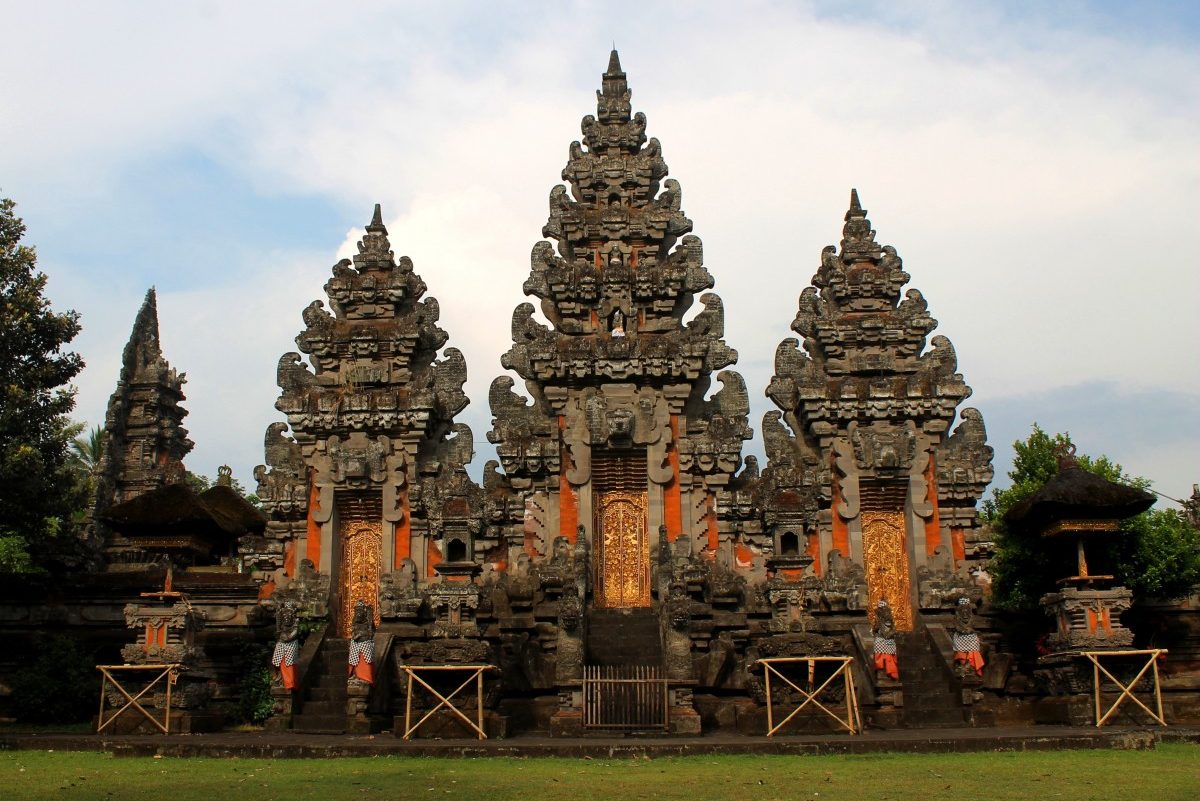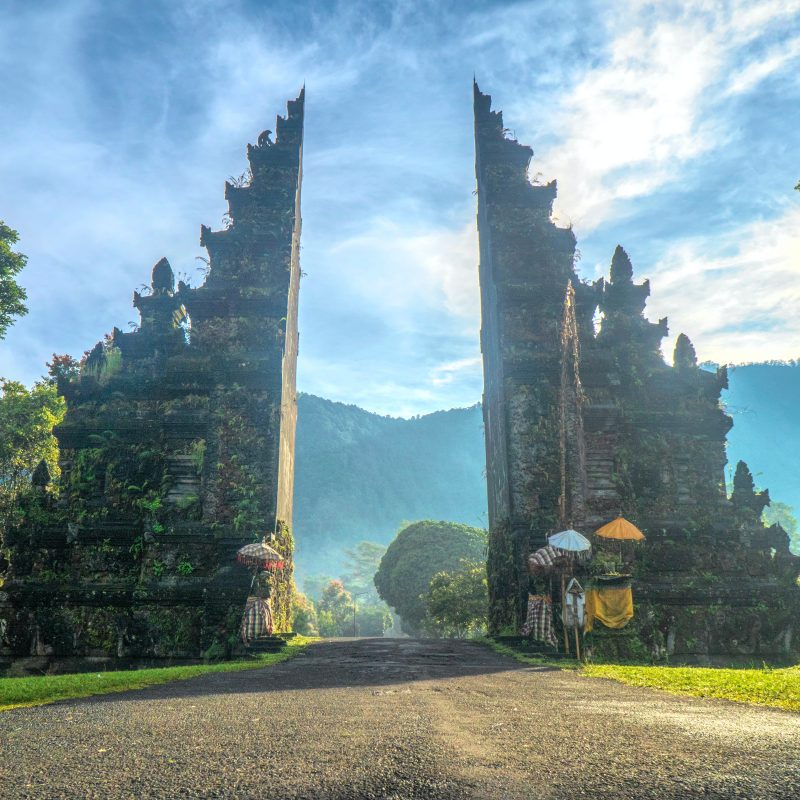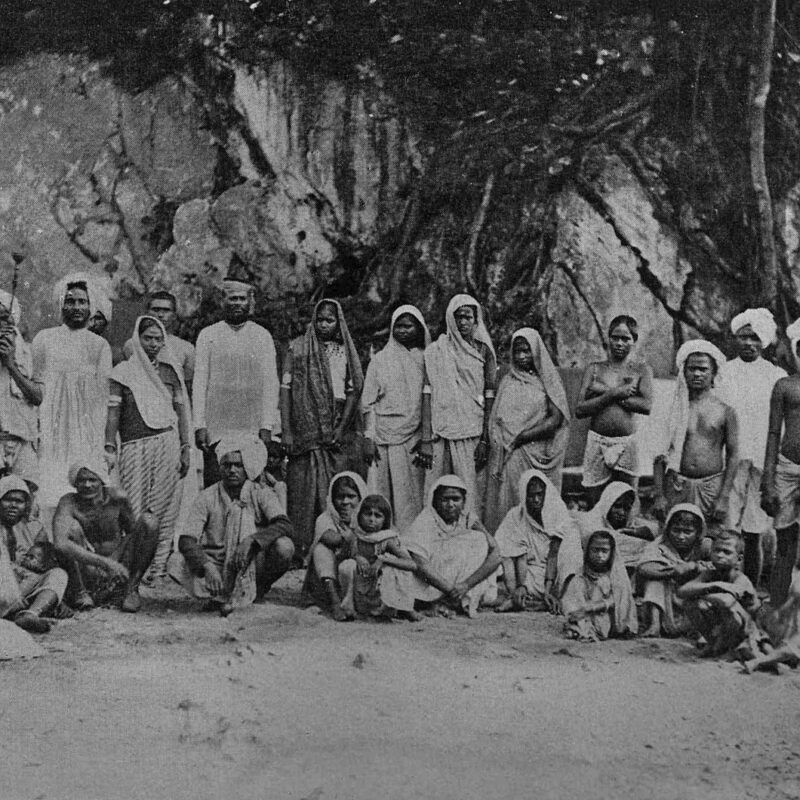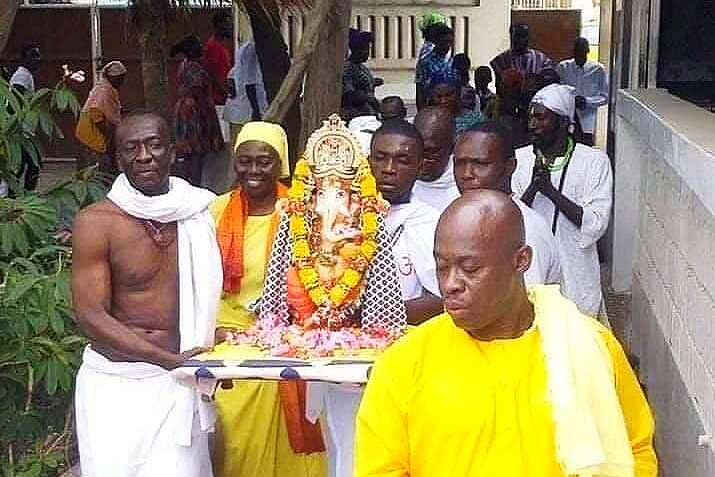

To the casual observer, Hinduism’s presence in Java probably doesn’t seem prominent enough to be of any noteworthiness.
Unlike its neighbor island of Bali, which is 90 percent Hindu, Java is home to Indonesia’s capital and is also the country’s most densely populated island, making it — in many eyes — the heart of the world’s most populous Muslim nation.
A closer look into the island’s cultural history, however, shows that Java has a far more complex and layered Hindu story to tell than what appears on the surface — a story that not only reaches far into the past, but is also sure to be of real significance going into the future.
Hindu kingdoms prospered in Indonesia between the fourth and late 15th century after Buddhist monks and Shaiva priests brought Indic religions to the archipelago during the first millennium CE. These kingdoms were, however, replaced with the arrival of Islam, leaving only isolated clusters of communities that publicly identified as Hindu in the country.
Probably the largest and most well known of these communities is the Tenggerese, who occupy around 50 villages in the remote Tengger highlands of Java’s eastern province.
The Tenggerese are descendants of the Majapahit empire, which was one of the last great Hindu empires that flourished in Indonesia before being driven deeper and deeper into the highlands as Islamic rule took hold on the island.
Legend has it that sometime in the 15th century Princess Roro Anteng, daughter of the Majapahit King Brawijaya, fled to the mountains of East Java with her husband Jaka Seger, and took shelter at a volcano called Mount Bromo, named for the Hindu God Brahma.

There, the couple — along with others who had taken refuge at the volcano — started a new kingdom called Tengger (a name derived from a combination of their own last names), which subsequently grew and prospered.
Despite the kingdom’s success, however, the couple couldn’t produce an heir. Desperate, they climbed to the top of Mount Bromo, where they prayed and meditated. After many days, the peak’s crater opened in response to their prayers, and out resounded a Divine voice announcing the couple would be blessed with children under one condition: that their youngest born be given back to the volcano in sacrifice.
After having 25 kids, the couple, as expected, never followed through with this condition. As a result, the volcano is said to have consumed Prince Kesuma — the couple’s last born — in a great eruption.
Ever since, the Tenggerese have placated the volcano by making yearly offerings of rice, vegetables, fruits, flowers, money, or any other valuables, in a festival called Yadnya Kasada.
As conveyed in the story of Prince Kesuma’s death, the identity, customs, and rituals of the Tenggerese are deeply informed by the legends associated with their cultural history. By far the most influential stories tied to the Tengger people are the sacred Hindu epics The Mahabharata and The Ramayana.
Besides the fact that The Mahabharata and The Ramayana are spiritual stories that people from any part of the world can appreciate, Javanese Hindus feel especially connected to the epics in a way that can be described as ancestral.
Not only is Java mentioned in the Ramayana as Yawadvipa, being one of the places the monkey King Sugriva sent his men in search of Rama’s abducted wife Sita, Javanese Hindus have their own versions of the Mahabharata, with at least one of them tracing the lineage of Javanese kings back to the Pandavas (the central figures of the story). Because of this, many Hindus in Java have come to believe the Mahabharata took place in Java rather than India.
These stories and their characters have thus become deeply embedded into the fabric of Javanese culture, and are widely presented in live dance performances and popular traditional puppet shows called Wayang.
Other traditions and ceremonies practiced by the Tenggerese are guided by a spiritual worldview that, like the Balinese, is a type of Shaiva-Buddhism that incorporates elements of local indigenous customs and ancestor worship.
Similarities between Balinese and Tenggerese Hindus can be specifically highlighted in their worship of many of the same gods. Some of these include:
- Sang Hyang Widhi Wasa: the ultimate and inconceivable spiritual source from which all of creation emanates;
- Brahma: the god of creation called Sanghyang Geni in Javanese;
- Vishnu: the god of preservation called Sanghyang Banyu in Javanese;
- Shiva: the god of transformation called Sanghyang Bayu in Javanese.
Of course, Tenggerese Hinduism differs from Balinese Hinduism in its incorporation of local Tengger customs, many of which are drawn from Hinduism as it was practiced in the Majapahit empire.
Generally speaking, the Tengger form of worship is considered less complex, with a particular focus on the potency of sacred mantras recited in Sanskrit and Kawi (Old Javanese, which is similar to Sanskrit), along with basic offerings of fruits and other food.
The temples of the Tengger people are also simpler, with worship usually occurring at small shrines known as sanggar pamujan’s, or “gathering places.” It’s at these shrines that ceremonies are conducted in honor of the local spirits and their ancestors. Some of them include:
- Cikal Bakal: the spirits of the founders of the village;
- Roh Bahurekso: the village guardian spirits;
- Roh Leluhur: the spirits of the ancestors.
Though the Tenggerese are particularly emblematic of a Hindu empire that once thrived on the island, their surviving culture tells only part of Java’s Hindu story.
According to Thomas Reuter, a professor at the Asia Institute at the University of Melbourne, the Islamization of Java had only a moderate influence in many regions of the island. In the paper Great Expectations: Hindu Revival Movements in Java, Indonesia, he writes:
“While the majority of Javanese did become ‘Muslims,’ following the examples of their rulers, for many among them, this was a change in name only. Earlier indigenous Javanese and Hindu traditions were retained by the rural population and even within the immediate sphere of the royal courts, especially in a context of ritual practice. In this sense, the victory of Islam has remained incomplete until today.”
Many regions of Java have been primed for a return to Hinduism because of this, a trend which has indeed taken place over the decades. It has been driven not only by the island’s evolving political conditions, but also by the people’s belief in prophecies that tell of a future when Hinduism will be revived to its full glory.
Hindu communities have thus formed and rallied around temples of both old and new in an effort to fulfill such prophecies, not merely to preserve a culture from a past empire, but to build a future that honors and stays true to a form of Hinduism that isn’t practiced anywhere else.










































